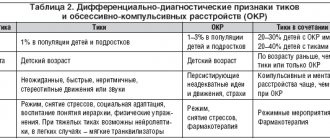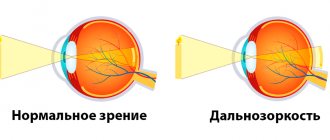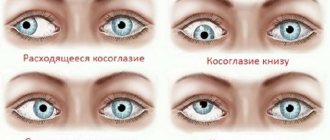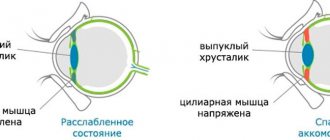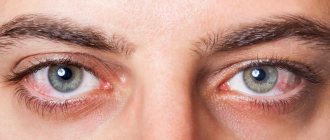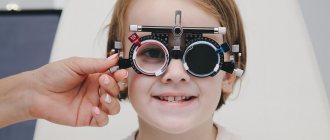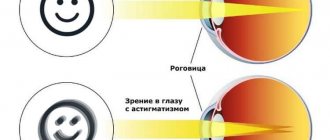Short stature and disproportion of the skull, incorrect body proportions, a very rounded face, pronounced mental retardation - all this speaks of cretinism. Below in the article you will find the causes of the disease; the doctors who treat him; necessary medical procedures for treatment; as well as general information about the disease, its localization, features of diagnosis of diseases and their treatment. However, we advise you to consult a doctor, because self-medication is 90% fraught with complications
Make an appointment and consultation
Cretinism. general information
Cretinism (congenital hypothyroidism) is an endocrine disease characterized by congenital hypofunction of the thyroid gland. Cretinism manifests itself in delayed physical and mental development, dementia.
When treating Cretinism, doctors at the BIOSS clinic use both time-tested and the latest developments and proprietary techniques.
The BIOSS MC employs the best doctors in Moscow who have extensive experience in the treatment of Cretinism
The macroscopic picture reveals asymmetry and microcephaly of the brain, a small number of convolutions, thickening of the soft and dura mater. The cavities of the cerebral ventricles are somewhat dilated and filled with fluid, and the ependyma is thickened. Brain weight is changed. The microscopic appearance of the brain in cretinism is largely unknown. There are often chronic changes in degenerative cell type in the ganglia.
There are no specific histological changes observed in the thyroid gland. Often, degenerative and atrophic processes are detected in the parenchyma of the gland and the proliferation of its connective tissue. Signs of cretinism are presented in the form of facial anomalies and growth disorders that affect both skeletal bones and soft tissues.
What is cretinism, what are the causes of the disease
Endocrine pathology is characterized by impaired mental and physical development as a result of a lack of hormones produced by the thyroid gland. Thyroid hormones are important for the development of the body; thanks to their effect, cells receive a genetic purpose; their deficiency leads to the most serious anomalies, inhibiting the development of internal organs and the central nervous system.
Causes of pathology
- lack of iodine in the mother’s diet while pregnant;
- hereditary factor;
- radiation exposure during radiography;
- removal of part of the thyroid gland;
- congenital disorders, including hypoplasia;
- taking certain drugs that suppress the activity of the thyroid gland;
There are congenital and acquired causes, the latter include inflammatory processes in the tissues of the gland, surgery on the thyroid gland, head injuries (affecting the production of hormones), etc.
Signs of cretinism in adults
- Changes in size, disproportion of the skull due to disruption of its growth. Despite the fact that the head appears disproportionately large in relation to the body, cretinism is characterized by microcephaly - a decrease in the size of the cranial cavity and brain.
- Short stature. The height of patients with cretinism may vary, but in general it is significantly lower than that of a healthy person.
- Violation of body proportions. In 25% of cases, patients with cretinism have a correct proportional physique. The remaining 75% have imbalances. The arms and legs are shortened in relation to the body and have a large thickness. Due to this, the patient's movements are awkward. The joints are massive, thickened, and often curved. The palms are wide and the fingers are short. The feet are often turned inward, and clubfoot is noted.
- There is impaired mobility in the spine and various joints. Almost all patients have a narrow pelvis.
- With cretinism, the growth of the base of the skull is impaired, so the back of the patient’s nose becomes wide and sunken, and the distance between the eyes is increased.
- The patient's face has a characteristic appearance and is rounded. This occurs due to subcutaneous swelling.
- The forehead is covered with wrinkles, which makes the patient seem older than he actually is.
- Little hair grows on the patient's body; it is coarse and usually dark black in color.
- Other characteristic facial features: high forehead, wide cheekbones, protruding ears, large lips, constantly protruding tongue.
- All patients, to one degree or another, have mental retardation. Sometimes it can occur in the form of idiocy, when the patient is not able to care for himself.
- With cretinism, there is a decrease in size and insufficient function of the gonads. As a result, many patients are infertile.
- Hearing and speech impairment. They can be very pronounced, even to the point of deaf-muteness.
- Apathy, lethargy, drowsiness, mental disorders to varying degrees.
Frequently asked questions about cretinism
Is it possible to completely cure the disease?
No, but medicine can prevent serious impairments in physical and mental development, as well as other complications, so the help of doctors is mandatory.
Can the patient lead a full life?
Yes, when undergoing complex therapy, a person will be able to avoid disruptions in the functioning of the brain and internal organs, leading a full life without significant restrictions.
What is the danger of the pathology, what consequences occur in the absence of treatment?
Without the necessary help, the disease leads to delays in mental and physical development, decreased intelligence and disruption of various body systems. There is a high risk of developing a thyrotoxic crisis, when due to stress, overexertion and injury, excessive amounts of hormones are released into the blood.
Blood test for hormones
If cretinism is suspected, two groups of hormones are examined in the blood:
- thyroid hormones;
- pituitary hormones.
Changes in the levels of various hormones in cretinism:
| Thyroid hormone levels | Pituitary thyroid-stimulating hormone level | |
| Healthy man | fine | fine |
| Primary hypothyroidism | demoted | Promoted |
| Secondary and tertiary hypothyroidism | demoted | Demoted |
This condition is known as transient, or temporary, hypothyroidism. The level of thyroid hormones decreases temporarily and then recovers again; cretinism does not develop. In this case, there is a slight decrease in the level of thyroid hormones in the blood and a slight increase in the level of thyroid-stimulating hormone of the pituitary gland. This result is considered doubtful, so the study is repeated after some time. Many clinics conduct screening studies, that is, blood is taken from every newborn for analysis. Where screening is not carried out, in maternity hospitals blood is taken for analysis from children who have at least two symptoms of the disease after birth. In sick children aged 4–6 months, the level of fats and cholesterol in the blood increases. This may also be indirect evidence of the presence of the disease. To identify pathological changes, a biochemical blood test is performed. When performing a general blood test, some patients are found to have anemia.
Questions and answers
Is it possible to cure cretinism completely?
It is possible to prevent developmental disorders of the nervous system and other organs if replacement therapy begins no later than two weeks from the date of birth of the child. Typically, in 92% of cases, the formation and differentiation of tissues occurs in the patient, subject to the constant use of hormones, just like in healthy children. 8% may have intellectual and neurological impairments, but they are much weaker than untreated patients.
What should be done to prevent cretinism?
Since cretinism is a congenital pathology, its occurrence can be avoided if a woman follows proper nutrition during pregnancy, adding seafood to her diet, or salt or bread artificially enriched with iodine. In endemic areas, the expectant mother is prescribed the use of drugs with iodine.
Treatment of cretinism in children and adults
Treatment of cretinism and any type of hypothyroidism in a child should begin from the moment the diagnosis is made. The earlier therapy is started, the more favorable the prognosis. In case of insufficiency of thyroid function, so-called replacement therapy is carried out. The patient is prescribed hormones that should restore impaired functions. These drugs are effective for all types of hypothyroidism, except those caused by impaired tissue sensitivity to thyroid hormones. Sometimes the clinic’s capabilities do not allow you to immediately take tests and make an accurate diagnosis. If there are external signs of cretinism, then treatment is carried out without test results, and then they act based on how the patient’s condition changes during therapy. If treatment is started in the first month of life, then the disease can be controlled: the child develops completely normally. If therapy is prescribed later than 4–6 weeks, then there is a high probability of mental retardation and other complications. Drugs used to treat cretinism in children :
| Drug name | Description | Dosages |
| L-thyroxine | The drug is a synthetic analogue of thyroid hormones. It creates an artificial hormonal background in the blood and restores impaired functions. How does a doctor monitor the effect of therapy?:
|
The dose is selected according to the level of thyroid-stimulating hormone in the blood. Subsequently, treatment is carried out for life. |
| Vitamin A (syn.: Retinol, Axerophthol, Vitadral, Alfasterol). | Patients with cretinism experience skin problems that are helped by vitamin A (retinol). | The dosage is determined by the attending physician, depending on the severity of the condition. |
| Vitamin B12 (syn.: Cyanocobalamin, Dodex, Neurobene, Ankermann) | Main effects of Cyanocobalamin:
| The drug is available in ampoules. The solution can be administered intramuscularly, intravenously, or subcutaneously. The dosage and method of administration are determined by the attending physician. |
| Piracetam (syn.: Nootropil, Cerebril) | Main effects of piracetam:
| The drug is available in tablets. Dosages:
Treatment with Piracetam is carried out for a long time, in courses of 1 month or longer. |
| Cerebrolysin | The drug is a protein obtained from the brain of cattle. Main effects:
| Cerebrolysin is administered intravenously. The dosage of the drug is determined by the attending physician. |
| Lipocerebrin | The drug is a phospholipid (a type of fat essential for nerve tissue) obtained from the brain of cattle. | Lipocerebrin is available in tablet form. Dosage: Prescribed 1 - 2 tablets 3 times a day. |
| Encephabol (syn.: Pyriditol) | Main effects of the drug:
| The drug is available in tablet form. It is taken 2-3 times a day after meals. Dosages for children and adults are selected by the attending physician. For adults, the course of treatment lasts from 1 to 3 months. For children - from 2 weeks to 3 months. |
| Pantogam | Main effects of the drug:
| Pantogam is available in tablet form. Dosages:
The course of treatment lasts from 1 to 4 months. After a break of 3–6 months, it can be repeated. |
| Attention! The information in the Treatment section is presented for informational purposes only and cannot serve as a guide for taking medications independently, without medical supervision. Self-medication can lead to negative consequences. |
What is dyscalculia?
Discover quotes Edward Hubbard, a neuroscientist at the University of Wisconsin, as saying that people with dyscalculia have difficulty telling whether seven is greater than five. Although dyscalculia is a very rare condition, it is about as common as the similar reading disorder dyslexia, but is not well researched.
From calculating tips at a restaurant to following instructions, the ability to understand numbers is essential to living a functional life. According to the results of a study conducted in the UK back in 2013, people aged 30 who count on their fingers, as a rule, do not have a higher education, are more likely to be unemployed, and have problems with the law and with health. Dyscalculia is severe in that despite flashcards, computer games, math songs, and extracurricular activities, people who suffer from it cannot truly understand numbers.
However, now, thanks to advances in brain imaging techniques and an improved understanding of numerical cognition in general, new ideas about some people's inability to do math have begun to emerge. Researchers have traced dyscalculia all the way to the back of the brain, known as the intraparietal sulcus, or IPC. This area of the brain is critical for perceiving and roughly comparing quantities—say, a group of dots on a page or a spades on a playing card.
Boys are twice as likely as girls to have dyslexia (and girls have dyscalculia)
The intraparietal sulcus (IPS) is located on the lateral surface of the parietal lobe and consists of an oblique and horizontal part. The IPS is hypothesized to play a role in other functions, including the processing of symbolic numerical information, visuospatial working memory, and the interpretation of others' intentions.
In a 2007 study, researchers scanned the brains of children with dyscalculia while they counted the number of squares presented on a screen. When asked to determine which squares were larger, children with dyscalculia made more errors and responded more slowly than healthy controls. Additionally, unlike their peers, children with dyscalculia showed no differences in IPC activation when comparing pairs of numbers that were closer or farther apart in value. The study authors suggested that these children's brains are not as efficient at recognizing the relative distance between numbers. Other scientists have since discovered similar effects.
In further study of dyscalculia, it was discovered that the ability to distinguish different quantities from each other appears at the age of 6 months. Moreover, some scientists suggest that in some cases the brain associates the perception of quantity with number symbols, such as Arabic numerals, or with the way it associates numbers with verbal or spatial processes.
Have you or someone you love experienced dyscalculia? We will wait for the answer in the comments to this article, as well as in our Telegram chat
Signs and symptoms of dyscalculia
Dyscalculia can affect people across the IQ range, along with difficulties with telling time, measuring and spatial reasoning. Estimates of the prevalence of dyscalculia range from 3% to 6% of the population. In 2015, it was found that 11% of children with dyscalculia were also diagnosed with ADHD (attention deficit hyperactivity disorder).
Given how important mathematics skills are in everyday life, there is a need to develop ways to reliably identify children with specific learning difficulties related to mathematics.
Researchers note that dyscalculia often looks different at different ages, but symptoms can appear as early as preschool age. Common symptoms of dyscalculia are:
- Difficulty understanding time on a clock;
- Inability to understand financial planning or budgeting, sometimes even at a basic level; for example, estimate the cost of goods in a shopping cart;
- Difficulties with multiplication tables, performing mental calculations, etc.;
- Errors in writing, reading and remembering numbers;
- Problems with the difference between left and right;
- A "distorted" sense of spatial awareness, or an understanding of shape, distance, or volume that is more like guesswork than actual understanding;
- Difficulty following instructions, scheduling, and time tracking;
- Difficulty mentally judging the measurement of an object or distance (for example, whether something is three or six meters away);
- Inability to understand and remember mathematical concepts, rules, formulas and sequences;
- Poor memory for names or faces;
To always be on top of the latest news from the world of popular science and high technology, subscribe to our channel on Google News
Mathematical impairment can result from some types of traumatic brain injury, in which case the correct term is “acalculia” to distinguish it from dyscalculia, which is congenital, genetic or environmental in origin.
